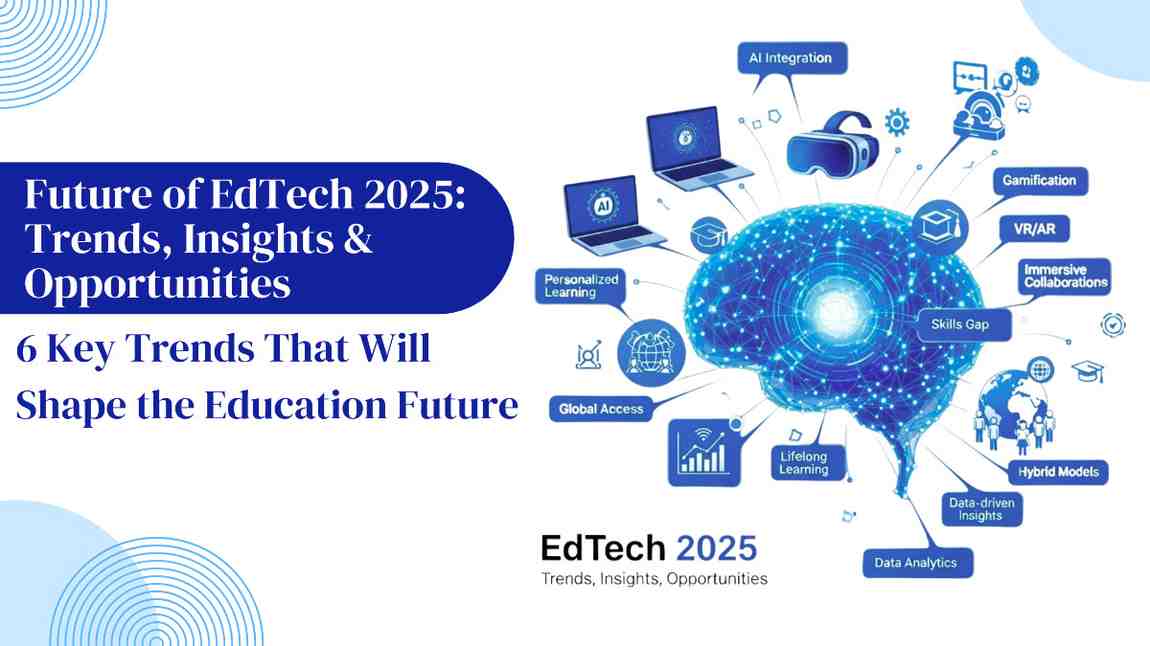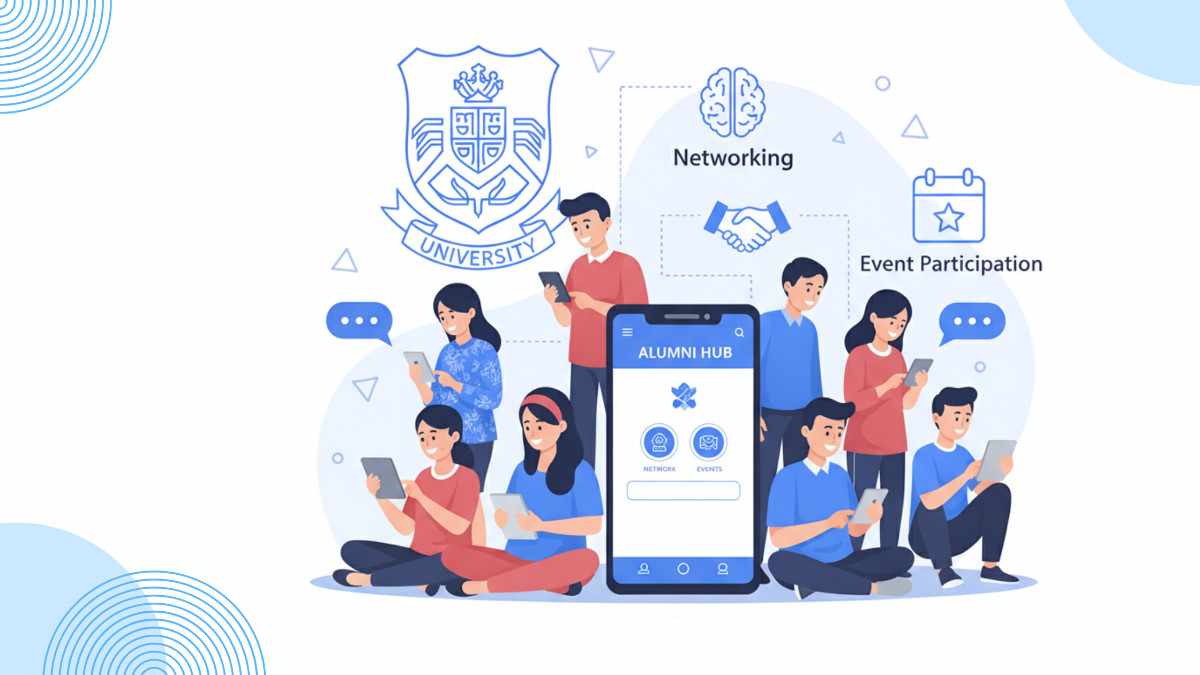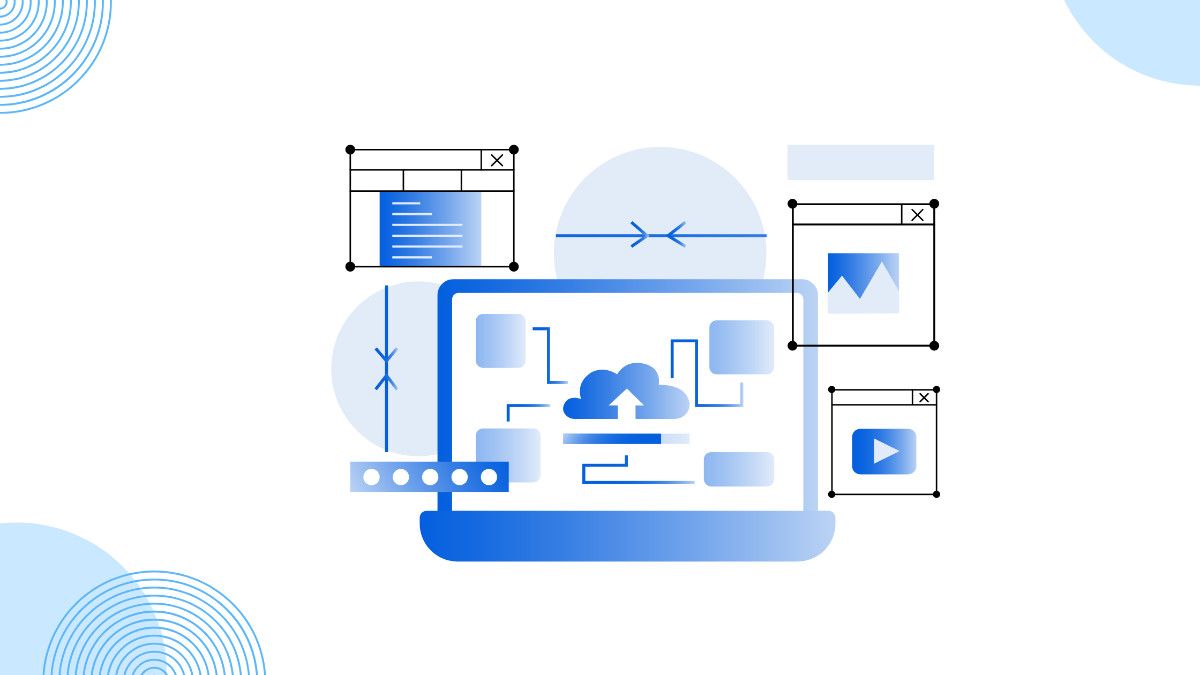Future of EdTech 2025: Trends, Insights & Opportunities
Explore how EdTech is transforming education in 2025 through AI-driven personalization, immersive learning, digital inclusion, and community-powered platforms. Learn how technology is shaping a more connected, ethical, and inclusive learning future.

Did you ever wonder if the education system we have now really teaches students the best that it can? Will it matter in 5 or 10 years?
Education has changed at an increasingly faster rate because of technology, changing requirements, and international collaboration. What was science fiction not long ago—virtual classrooms, AI teachers, and electronic diplomas—is currently a reality. Looking forward to 2025 and beyond, EdTech is not just online learning tools. It’s about connection, access, and building community.
Introduction
The global EdTech market is growing at a remarkable pace. Valued at $220.5 billion in 2023, it is projected to surge to $810.3 billion by 2033, fueled by rising demand for flexible, accessible, and personalized learning experiences. Similarly, the smart education market is expected to reach $680.1 billion by 2027, reflecting a strong global shift toward technology-driven learning solutions.

Consider a student in a village in India learning alongside an Ivy League university graduate using an alumni network—this is no longer a dream, but the new reality enabled by education technology.
EdTech in 2025 is a significant shift—not only in technology but in the way that people teach, learn, and interact with one another. The largest shift is about people: the potential of technology to serve learners, foster community, and make opportunities accessible to all.
6 Key Trends That Will Shape the Education Future
As we step deeper into a digitally connected era, education is no longer confined to classrooms or static syllabi. The future of learning will be defined by flexibility, personalization, and connectivity. These six trends will significantly shape how learners, educators, and institutions evolve in 2025 and beyond:
1. Use of AI and Automation
Machine learning and AI are helping create personalized learning experiences. By looking at each learner’s interaction, sites are now able to provide content that addresses their specific needs, which enhances engagement and retention.
According to Forbes, 60% of educators already use AI in education, like classroom daily, a number that’s expected to grow.
2. Hybrid Learning Models
Blended learning is the new norm, not add-on. Combining online and on-campus instruction offers greater flexibility, access, and tailoring in education and workplace training.
3. Micro-learning and Credentialing
Bite-sized learning and micro credentials are revolutionizing the process of upskilling. Students and employers are increasingly recognizing stackable, flexible certification that addresses actual needs.
4. Immersive Learning Using AR/VR
AR and VR are no longer only for gaming—they’re transforming classrooms. They enable students to learn about the human body, visit ancient cities, or perform physics experiments, rendering difficult subjects more interactive and easy to comprehend.
5. Gamification for Higher Engagement
Gamified learning utilizes things like points, levels, and challenges to motivate learners. EdTech platforms that use gamification have more people finish their courses and attain better results.
6. Collaborative Learning & Rise of Educational Communities
Content delivery is no longer sufficient. Successful learning today relies on interacting with peers, mentors, and institutions. This network allows individuals to be more engaged and feel supported.
This is where sites like AlmaShines come in. They enable schools to create vibrant alumni communities, foster collaboration in the external world, and facilitate lifelong learning beyond the classroom.
How Technology Enhances Learning Communities
- Collaboration Tools: Virtual spaces, group messaging, and video calling allow collaboration and teamwork.
- Inclusive Design: Multilingual capabilities and accessibility features provide equal participation geographically and across learning styles.
- Alumni Networks: Industry connections and mentors provide learners with credibility, currency, and long-term value.
Security, Ethics, and Digital Access
As EdTech expands, its role expands as well:
- Cybersecurity: Encrypted systems and transparent data handling are non-negotiables.
- Ethical AI: Algorithms should be fair, inclusive, and equitable.
- Digital Inclusion: Governments and institutions must provide subsidies on equipment and broadband internet access in public spaces to bridge the digital divide.
Challenges and Opportunities: A 360° Snapshot
| Strengths | Challenges | Opportunities |
|---|---|---|
| Artificial intelligence-based individualized learning | Unequal digital resource access | Low-cost, scalable EdTech solutions |
| Employing AR/VR and gaming | Limited training for teachers | Teacher training initiatives |
| Microcredentials and flexible pathways | Screen burnout and fatigue | Wellness-focused balanced hybrid curriculum |
| Community-based learning | Ethics and data protection issues | Student-centered, moderated, secure online spaces |
Conclusion: A Future Based on Connection
EdTech 2025 is not just about smart tools—it’s about better systems in which students belong to a community. With tailored learning paths, classes that use augmented reality, and mentorship from former students, the future of education is personal, welcoming, and highly human. The real innovation is not only in algorithms; it is also in how technology keeps us connected.
Suggested Blogs
Let’s discuss the idea
Join hundreds of companies transforming their corporate communities with Almashines






